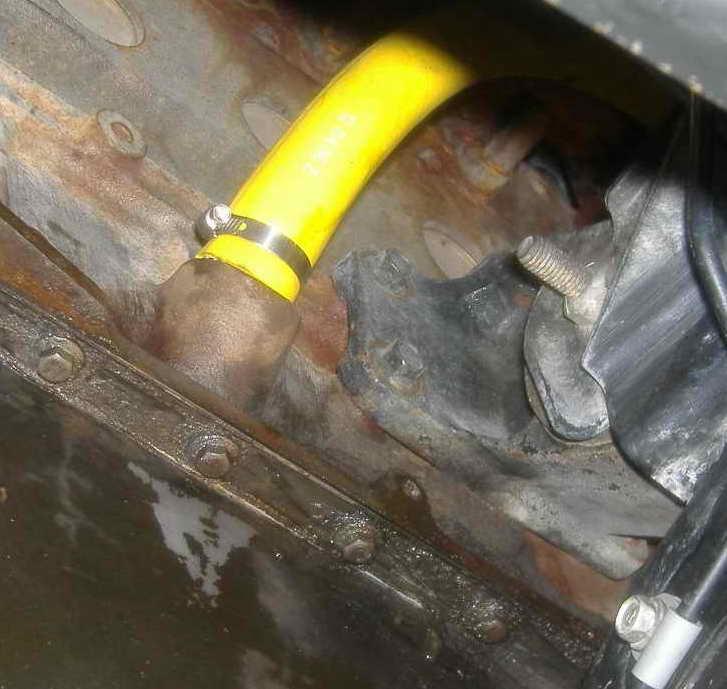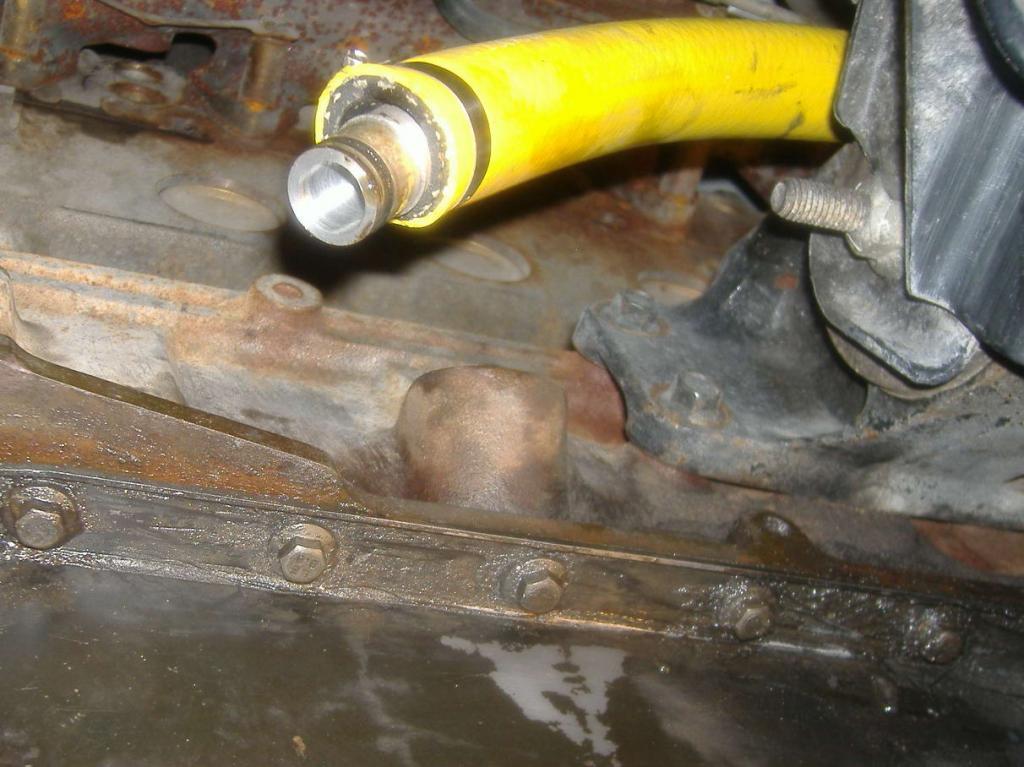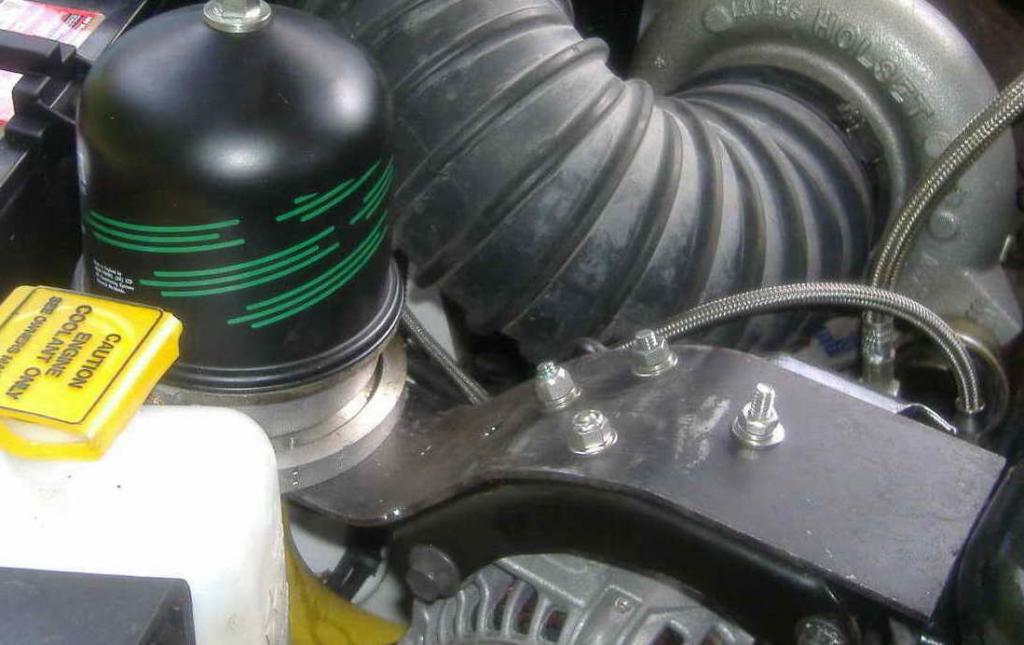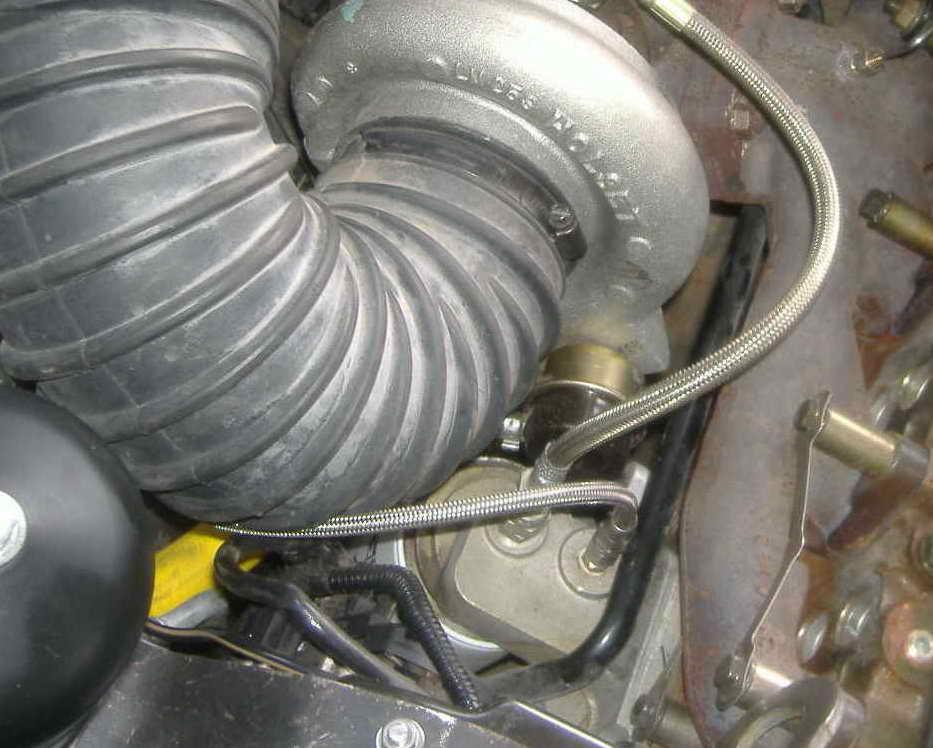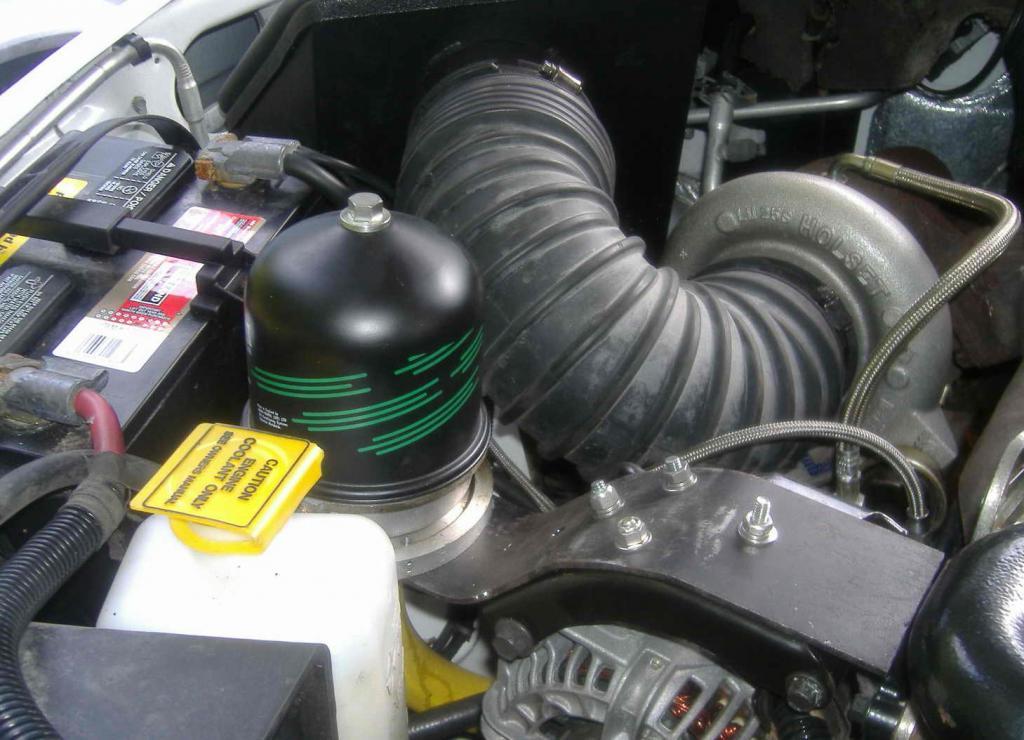Everything posted by vineyardmh
-
New revised MPG/High idle switch design
I have seen write-ups for modifying the IAT - where 3 DPDT switches were used but where a 4 position switch would work nicely (normal-use IAT, substitute a resistor for 143°. substitute a resistor for about 35°, and substitute a resistor for about 10° ...2nd position gives MPG improvement, 3rd gives high-idle, and 4th gives the high idle + 3 cylinder ops.) I have seen write-ups for modifying the ECT - substituting a 3.3K resistor to simulate very cold conditions....but the write-up isn't quite specific as to whether or not the ECT low-temp fake is required for high-idle or high-idle+3 cylinder ops.A question for Yankneck696- Does the new design switch off the ECT sensor and substitute a resistor for the 3rd or 4th or both positions on the rotatable switch? Is the ECT 'fake-out' even required to get high idle or high-idle+ 3cylinder ops?Thanks
-
Need help with some issues after no. 6 cylinder replacement...
As I said ...I am a simple engineer who likes to do ''back of envelope" calcs and simplified modeling that perhaps closely models what we CAN do in the real world without expensive lab tools. Your thought experiment is too complex to do in the real world. But we do make assumptions - during piston compression cycle, we assume minimal heat of compression lost to the piston and cylinder walls, we assume minimal leakage past rings....and the compression is nearly instantaneous enough to 'approximate' Boyle's Law. My P1xV1/T1 = P2xV2/T2 gives results of 388 psi ...and if we subtract 15 to go from PSIA to PSIG ....we are in the ball park. But the error of calculation is that maybe the gas is much hotter than assuming T2 is only at the ignition temperature of diesel (483 deg K) ...maybe it is hotter. But it is hard to reliably measure without a nice science laboratory. But - if we work reverse and assume that a 388 psi is reasonable at a minimum to give good auto-ignition of diesel ....then compression test values of under 250 psig would be problematic....and your statement that "Maybe the dude just needs to rebuild his engine" is likely very correct! (I have read of some college students performing the advanced measurements on a diesel engine - heavy instrumentation so that they could show real measurements and compare to theoretical modeling. Piston speed (speed of compression) and chamber pressure (before and during combustion) were fairly straight-forward to measure, but getting pre-ignition gas temperatures were more complex and required several methods of getting reliable/accurate temperatures (and they need to be both high speed and high resolution)! Of course - as backyard mechanics - we don't have the time/tools or money to run these science experiments - nor do we want to!)
-
Need help with some issues after no. 6 cylinder replacement...
Ah..yes...I forgot to use Boyle's law. (P1 x V1)/T1 = (P2 x V2)/T2 Assume P1 = 14.7 PSI, V1 is 16 and T1 is ambient - 20 deg. Celsius or 293 deg. Kelvin Assume V2 is 1/16th of V1 ...or 1 ....and assume T2 is autoignition temp. of diesel - which is 483 deg. Kelvin - and solve for P2. P2 comes to 388 psi.
-
Need help with some issues after no. 6 cylinder replacement...
RE: Compression testing ....I am a simple engineer ...and I like simple concepts that can be done 'back of envelope'.If I have a piston moving up and down - and it has about 16.3:1 compression - then I would expect a compression buildup to be 16.3 x 14.7 psi - or about 240 psi is the pressure in the cylinder when the piston reaches TDC - and it won't go higher unless there is burning/combustion of fuel. {For a High Output HO engine with 17.0:1 compression ....then 17.0 x 14.7 = 250 psig. ] That number is assuming that the turbocharger isn't really spinning fast enough to add any real boost.If I got a mere 1 psi boost - then my air in as 15.7 psi - and I would get 256 psi. (But the starter motor is spinning the engine at maybe 200 rpm, there are no exhaust gases to expand out and spin the turbo - so I don't expect much boost!)When doing a compression test, it is necessary to turn the engine over 4 or 5 times - because on the 1st or 2nd stroke - there is some small bleed off of the pressure past the rings, and the compressed air volume now needs to include the volume of the gauge and air line to the gauge - and therefore it takes several cycles to get a reliable measurement. BUT - after each cycle of the piston - the pressure is trapped in only the compression gauge - the cylinder pressure will bleed off as the exhaust valve opens - so it is difficult to have the compression gauge get a much higher reading than what the cylinder pressure can build up to....I haven't done a compression test on my Cummins - but on my old (and long gone) GM with a 6.2L engine that had a 22:1 compression ratio - I saw about 320 psi on my compression tests...matching my simple concept analysis. (And for my gasser 4.3L V-6 with 9:1 compression - the compression checks give me about 130 - 140 psi...which is what I have seen when doing compression checks.)Bottom line ...I am not sure that 350 to 400 psi on compression checking a Dodge 5.9L engine is reasonable...but I remain open to alternate explanation!
-
Centrifuge Filters
These centrifugal filters - as noted - are "Bypass Filters" - and typically have an orifice to limit the flow (so as to not deprive the engine components of needed flow.) Also - they typically have a spring valve that shuts off flow if the oil pressure is below 20 psig - again, to ensure priority flow is engine during startup and shutdown. My "spinner" is rated for a nominal 0.8 gpm flow, and can hold about 250 cubic centimeters of particles removed from the oil. If the pressure is above 20 psig - it will flow to the spinner - and the spinner WILL spin - and clean the oil! - - - Updated - - - Google can be used to find various sellers for optimal pricing. And if you are handy ...the other unit (TK55) might have better pricing....I found it AFTER I had bought the SPINNER II and hardware to do the install. A current link to a PDF for the information on the SPINNER II is here: http://www.spinnerii.com/files/comm_id_30/25.pdf In response to an earlier poster - if the oil pressure is around30 psig - the expected turbine speed isabout 4000 RPM - and a chart of speed vs pressure, as well as oil flow vs pressure can be found on page 2 of the 4 page document.
-
Centrifuge Filters
I have 2 1 ton trucks (both 2002) that I added centrifugal oil filters ....here are some notes/comments: There are several competative models - For example: TK55 GPH CENTRIFUGE | Centrifuge For Oil Filtration or: Spinner II Centrifuge Model 25 installation on the Dodge pickup with the Cummins 5.9l diesel engine These devices will remove particulates down to 1 micron ....and don't have expensive filters to replace. (On a commercial level, truck fleets have gone to these type units - sized appropriately - and have gone to 200K+ mile oil changes...but they do regular oil sample analyses to justify the extended oil change interval. For use - the cost of a complete oil analysis might be the same as the oil change - so maybe you merely extend to 20K miles instead of 7.5K to 10K. I found some 3/16" plate steel (about 3" wide, 13" long) - and I shaped it into a "lazy s" by using a hydraulic press, blocks, curved pieces, etc., until the top piece curved along the alternator bracket, and the lower piece was horizontal. I put a 1/4" aluminum plate on top ...drilled 4 mounting holes, drilled a larger hole for the drain - including a 1" NPT threading. Install a 1" NPT x 1" barb fitting. Use 1" stiff hose, good for 300 psi and 300 deg. (IIRC). About 3 ft. long. At the lower end - a 7/8" Block Oil Drain fitting to go into the block just above the oil pan and just behind the engine mount. (BOD from Vulcan, about $10.) Suitable high pressure, high temp oil line to go from the spare oil port next to the oil line going to the turbo..and the job is done. Let me know if you have any questions. Note - although installed last year - I haven't put more than 3000 miles on either vehicle - so I really haven't checked for the 'sludge capture' on the spinning assembly.
-
gallons per hour at varying rpm's
That engine is a "Low Speed Direct Drive" (LSDD) Marine Engine. Two major benefits - 1. no reduction gears required between engine and propellor. 2. These LSDD are almost as efficient as the theoretical "Carnot Engine". Top efficiency. The Carnot Engine is, per Physics - the most efficient use of energy coming from a heat source...and the theoretical efficiency is obtained by taking absolute temperature of heat source (max. temp. of fuel being burned) and subtracting the absoute temperature of the heat sink ...divided by absolute temperature of heat source. In the real world, it is hard to get the top heat source temperature, and the heat sink temperature is usually much higher than optimum...so efficiencies drop from the theoretical maximum fairly quickly. The shippers want decent speeds, but they also look for fuel efficiency ...so the LSDD is what is big on the market no.
-
FASS DDRP Dely wiring help....
The schematic shown might not be completely correct, IIRC.Here is what I think might exist - original and modified.The ECM would provide power directly to the engine block mounted Lift Pump (original) ...the yellow line would go high (12V) when the ECM wanted the lift pump to run. The lift pump would also have a connection to ground.With the Dodge fix to put a new lift pump in the tank - the ECM line (yellow) - would draw too much current to power the new lift pump ...and could cause an internal to the ECM relay to fail prematurely ...so the ECM line would control a relay. The yellow line would go to the coil of the relay (85, and the other side of the coil - 86 - goes to ground. A source of 12V+ connects to 30 ...and when the relay is energized (ECM energizes relay)...the Normally Open (NO) heavy duty contacts close and switch power to the Lift Pump to cause it to run. In this way - the ECM still completely controls the Lift Pump - but the heavy current goes through the relay contacts instead of internal to the ECM.You can do a 'sanity check' by using a small Ohmmeter - the relay coil will have about 80 to 250 ohms resistance (depending on type/size/model). Typically - the relay coil contacts (blades) are a bit smaller. If there are 5 blades ...2 for coil, 3 for the Single Pole/Double Throw Switch ...and when de-energized - the resistance between 2 blades will be infinite (Open) and between 2 blades will be near zero (Closed). Then if you energize the coil ...the previously Open path will now be zero ohms, and the zero ohm path will be infinite (open).
-
Need help with a part
Well...check around and see if you can get an e-brake installed. It can be very nice to have ....especially if you have a big load...especially if you are in the mountains. I too have a six speed....but the decel/braking from basic engine braking is nearly worthless....
-
Need help with a part
Sounds very much like an exhaust brake. Jacobs e-Brakes have the solenoid mounted on the firewall near the AFE. The wiring scheme sounds like Jacobs. PM me with your e-mail address and I can send you a PDF of the Jacobs e-brake installation directions, and you can check for the rest of the hardware, how to operate the system, etc.
-
Calling all wiring guru's!
I put a relay in the 12V line to the RV plug; the relay is controlled by a 5 psi oil pressure switch - so that when the engine is started up and running - the relay is energized and power can flow to the RV batteries. Switch the engine off, and the relay drops out - no more power from the truck flows to the RV. (This keeps me from draining truck batteries while camping - and it is fairly fool-proof!)
-
U joints
Been there ...done that...got the T-Shirt. BUT - there are times when BFI is NOT the way to go! (BFI = Brute Force and Ignorance). Finesse is usually better than BFI. Best bet - find a friend who has a shop press. Second best bet - buy your own shop press.
-
U joints
I have a ball joint press tool - supposedly useful for u-joints and ball joints - but I have never been satisfied with its performance. http://www.harborfreight.com/ball-joint-service-kit-for-2wd-and-4wd-vehicles-4065.html I have a 12 Ton Shop press - http://www.harborfreight.com/12-ton-shop-press-33497.html that works quite nicely! I have started a job with the compact ball joint press tool...and usually end up using the Shop Press! And the ball-joint service tool at $70 isn't that much of a savings of the $130 cost for Shop press - and the Shop Press is a nice tool to have and you will get your money's worth over time!
-
24 VALVE IN A 96? How big of a deal is it?
Are you sure it is even worth the effort if you have a 53 Block?? If you like the P-Pump - why try to use a suspect 24 valve block? Is there something wrong with your present 12V block? Maybe too much effort for limited benefits. (And if/when you want to sell the P-pumped 24 Valve Engine with a "53" on the side, many informed potential purchasers will give it a wide berth unless you really discount the price on it!!)
-
.....speaking of firewood... firechief wood furnace?
Small shops building limited numbers of stoves probably won't have the UL listing. (UL listing requires a fair amount of money for UL to review/test, etc. and issue the UL listing.) NOW - if you want a special stove installation - then the work-around would be to have the stove design and installation to be per Engineering Design. Have a Professional Engineer review the stove design and fabrication, and then specify correct installation of said stove into the house - and get the proper permit to install from the city or county - and you probably have a legitimate installation that an insurance company would not argue with. Too many "do-it-yourself" (DIY) types might take unacceptable short-cuts on the design/fabrication of a stove, or buy a stove that really is shoddy ...and then installation might not be to Building Code...leading to a fire and a claim. I can't blame insurance companies for wanting some degree of certification that a legit stove was installed properly. BUT - the cost of getting a PE involved might be more than buying a UL listed stove....However - for a really nice, well built stove (as described the poster) - it might be worth the extra effort. Obviously - this is an area not to take short-cuts, not a place to avoid getting any required building permits, inspections, etc. - because failure to do so could be used by an insurance company in denying a claim!
-
Two MUST see movies!
AND - I would add to the list: ATLAS SHRUGGED, Pt. II http://www.atlasshruggedmovie.com/ 2016 http://2016themovie.com/
-
I hope this doesn't come to Idaho.
And the French Socialist President has been moving forward with his plan to tax the wealthy at a 75% rate....and surprise surprise surprise ...lots of those very wealthy people are quickly moving out of France to England, Belgium or other places with lower tax rates. So France will loose the taxes that they paid. (Would you rather have 40% of something...or 75% of nothing?? Here in the good ol' USA, when Obama was told that higher tax rates often resulted in lower receipts to the treasury, he commented that it was still the right thing to do for "FAIRNESS". A little Forrest Gump philosophy is needed here ..."stupid is as stupid does!!"
-
First winter snow are you ready?
Who adds weight to the bed for more traction....and if so - about how much??What is typically used for blocking the radiator to help the coolant system not get too chilled? How much is typically blocked?
-
I hope this doesn't come to Idaho.
Why do you assume that rich people "sit on billions." In reality - they tend to INVEST the billions. And that investment provides the opportunity for money/loans to companies to grow and create jobs, employ people, etc. Those billions might be put in a bank and the bank can loan the money to people wanting to buy houses, start businesses, etc. Eventually, many of those rich people voluntarily set up foundations to then fund charitable causes (Andrew Carnegie Foundation, Ford Foundation, Rockefeller Foundation, Bill and Melinda Gates Foundation, etc.) Maybe they don't do it on your timetable or the way you think it should be done ....but it is their money! Ultimately, those "hoarding the wealth" don't "sit on it" unless they stuff it in a mattress. It is usually in the "system" somehow, and it usually helps "fuel" the economy in some fashion. But the wealthy can't buy up the majority of the things that everyone needs - even the majority of the poor in the US are affluent compared to 60 years ago - most of the poor have TVs, Microwaves, Refrigerators, a car, etc....and live better lives than most of the middle class in Europe! Obesity is more of a problem than hunger is! So we should be thankful that most of the wealthy are doing things to "grow the economy" (I will reserve commenting on Wall Street "titans" that engage in crony capitalism and get government bailouts for "too big to fail" megabank/financial institutions where fraud and graft might be happening!)
-
I hope this doesn't come to Idaho.
"STATIC ANALYSIS". The state assumes that the wealthy people are stupid, can't read, and won't find out what is in the bill. Reality (i.e. - "dynamic analysis" ) - is that when the wealthy people read the bill, they take action to move themselves and their asses (ummm...I mean Assets ) out of that state to a state that has lower tax rates/lower estate taxes...and then the state that raised the rates looses even MORE revenues. In the state of Washington, there was an increase in estate taxes, and that was followed by some of these wealthy people leaving the state, and the state lost the benefit of having them stay in the state. New York lost the tax revenues from Rush Limbaugh when he moved to Florida...and when Basketball Star Lebron James was looking to leave Cleveland - he turned down offers from New York because the state/city taxes on his salary would leave him with less money that what he would retain when he went to a Florida team. [These guys might have tolerated a 5 - 8% "bite"....but to have it go to 10%/11% or 12% ...and then told that they weren't "paying their fair share" ...who could blame them from telling NY to go pound sand!] So - all that happens when laws like that get passed is that the smart people who can move - do so, and then the taxes on the poor saps who are left behind go up to make up for the lost revenues...but the legislators can get re-elected because they engaged in "class warfare" to "soak the rich" (even if the rich avoided getting soaked!).
-
a have a couple VP44 questions
The observation that heat kills electronics is very accurate. Of course, other factors can come in - such as the design and use of certain components in the electronics. I work at a shipyard, and have had a chance to check on failures of electronic devices used at various shipyard...and can see higher failure rates at the hotter shipyards. A classic example I saw was a mis-designed circuit that used opto-isolators to turn on/off miniature relays. The miniature relays were low current - designed to use ONLY 30 milliamps. Unfortunately, the designer failed to note that the opto-isolator was rated for only 20 milliamps. But it worked initially, with no problems at startup. However, the hottest shipyard had 4 cards fail in 5 years where the opto-isolator "died", while the coolest shipyard (in the Pacific North Wet) had 0 failures. So in this example - it was a combination of pushing a component too hard (beyond its rating) ...resulting in no failures where the environment was cooler, but unacceptable components in hotter climates.For the opto-isolator example - we did re-design the circuitry so that it no longer switched a mechanical relay - using it to trigger a much lower draw electronic relay. OTOH - it is hard to redesign the Dodge/Cummins circuits. But - you see occasional "tweaking" around the edges - the ECM originally provided power to the Lift Pump on the block, but then that line from the EDM was used to activate a relay that would power an add-on pump (and the relay would draw less current than the original LP would draw.)There might be some benefits to improving air flow to the VP electronics, and the suggestion about cooling the system down might be beneficial. (But it is worth noting that many electronics have temperature ratings that are a bit higher if de-energized than if operating.)
-
I hope this doesn't come to Idaho.
And when considering the meaning of the 2nd Amendment, we can look at the various discussions that relate to "gun rights" based on the Federalist Papers. Rather than trying to discern the "meaning" of what constitutes a "well-regulated militia" by reading more contemporary documents, we can actually find out what most of the founding fathers intended by reading THEIR writings.F Federalist Paper 28 - the right of self defense...and it includes right of self-defense against a tyrannical government. Three jurists, who were contemporaries of the Founders, and wrote constitutional commentaries, read the Second Amendment as protecting a private, individual right to keep arms. There is no contrary evidence from that period. [Modern jurists look for either "eminations of penumbras" (finding something else in the Constitution that had not previously been found by lesser individuals), or they decide that a "living Constitution" requires the occasional "benefit" of being updated by jurists far smarter than mere mortals in our country, rather than rely on the provisions WITHIN the Constitution about how it can be changed. ] In his popular edition of Blackstone's Commentaries on the Laws of England (1803), St. George Tucker - a lawyer, Revolutionary War militia officer, legal scholar, and later a U.S. District Court judge (appointed by James Madison in 1813), wrote of the Second Amendment: The right of the people to keep and bear arms shall not be infringed, and this without any qualification as to their condition or degree, as is the case in the British government. When someone tells me that restrictions should be allowed because our Founding Fathers did not envision fully automatic rifles that far exceeded the capabilities of the technology that they had at the time (muzzle loaders), I then politely inquire as to our rights of free speech and free press being subject to revision and limitations, because our Founding Fathers didn't envision megaphones, radio and TV increasing the ability of one person to speak to large crowds, nor did they envision fully automatic high speed printing presses that would increase the distribution of the printed word far more than possible in the 18th century. [And of course - I also point out to them that after they successfully abolish the 2nd amendment, the 1st amendment can be crushed without the means to protect it!]
-
Is there any way to convert a 99 to outboard rotors?
This is the time to consider going to "free spin" kits that allow you to replace the front hubs with a much better assembly that makes it easier to grease or replace front bearings (vs. replacing the entire assembly) - to not have the front drive axle rotating when it isn't being used, etc. A bit pricey - but it is nice once it is done!
-
Acceleration still not completely smooth
Go to a hardware store and get the dielectric grease that is Mandatory for use when using aluminum wire. The dielectric grease is thicker, will stay in place longer/better - and is designed to help facilitate good electrical contact AND prevent oxidation/degradation of mechanical joints. For example: http://stormgrounding.electrical-insulators-and-copper-ground-bars.com/no-ox-id.html?gclid=CMnNw_OzkLMCFWHZQgodeC0Alg At room temperature - the stuff has the consistency of vasoline grease. I have a 12 ounce squeeze bottle that I bought 20 years ago, and it is still more than half full! (It doesn't take much to protect a single connection. I use it in the house, but more so for wire connections on my cars.
-
Dash Replacement
Lengthy discussion of changing the heater core - which includes dash removal - can be found here (with photos): http://www.dieseltruckresource.com/dev/quick-way-change-heatrer-core-2-3hours-t229112.html



